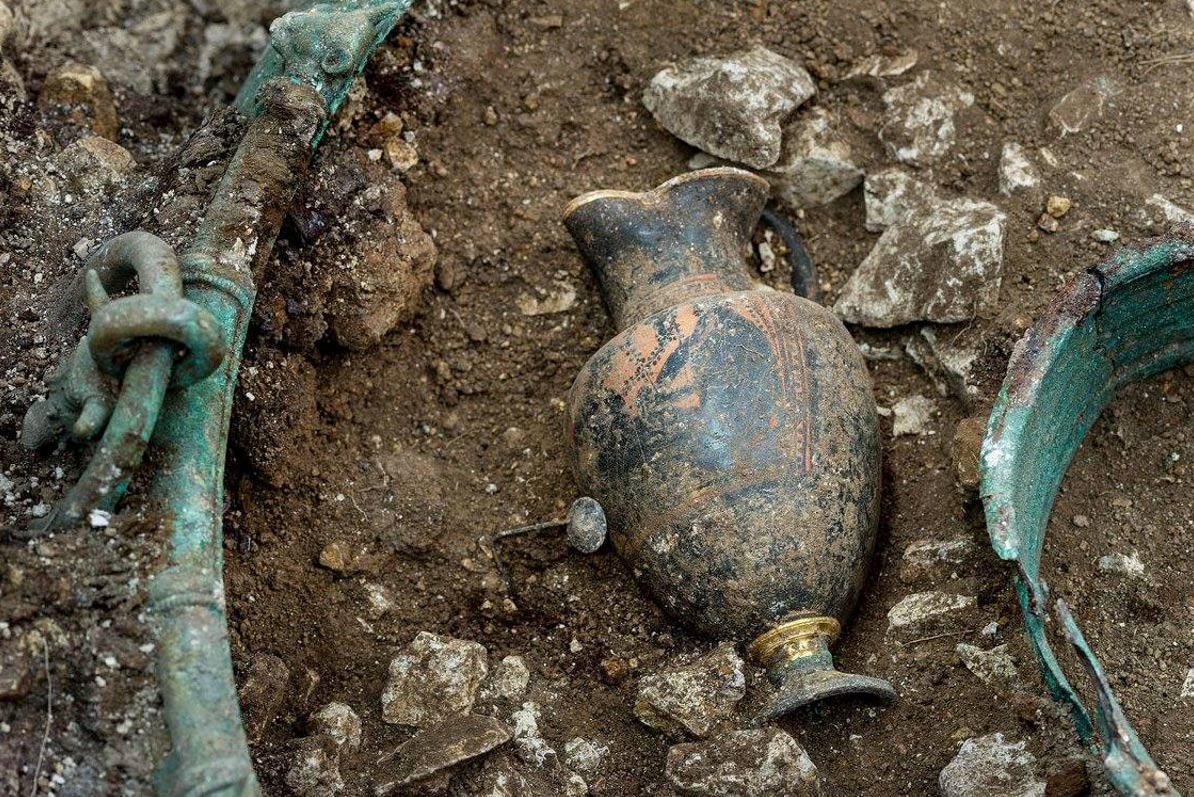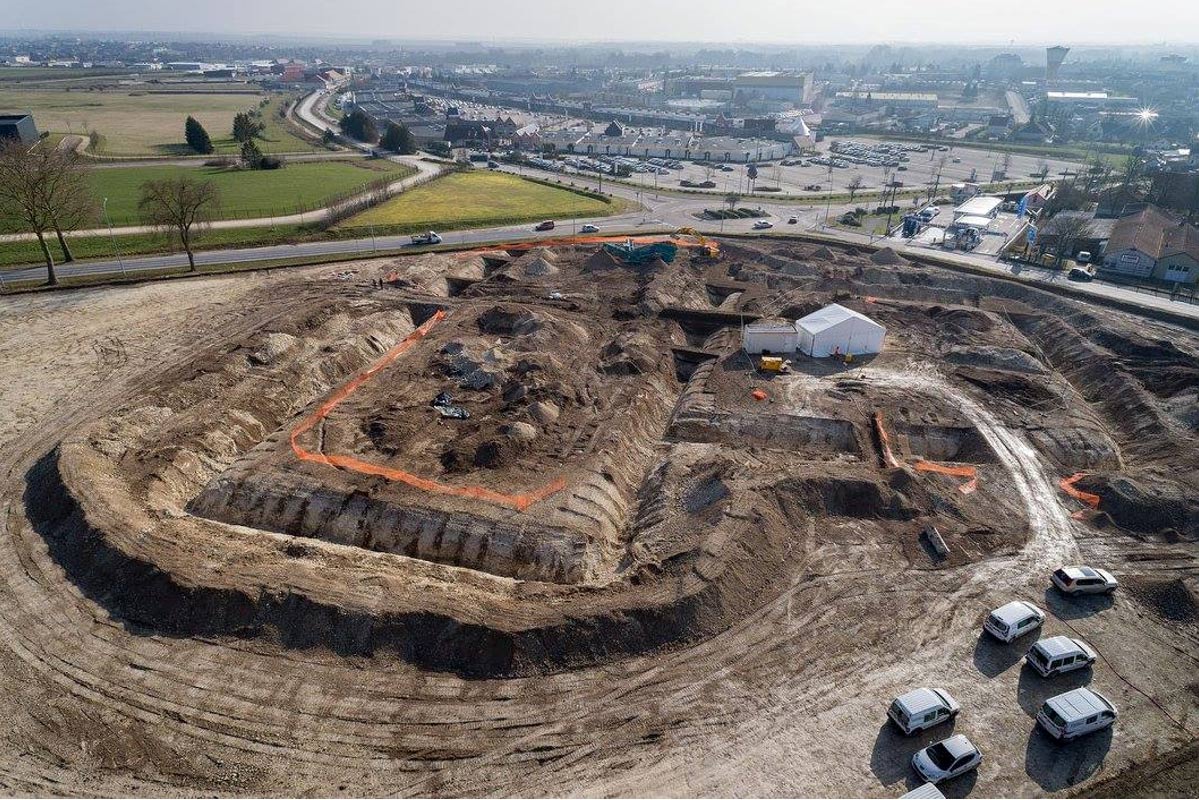In 2015, archaeologists in France excavated the huge funerary chamber of what they believe was a rich 5th century BC Celtic Prince. The burial held his chariot, a decorated bronze cauldron, a vase depicting the ancient Greek god of wine and ecstasy Dionysus, a giant knife, and other important artifacts.
The treasures of the tomb in the Champagne region are “fitting for one of the highest elite of the end of the first Iron Age,” the French archaeological agency INRAP told The Connexion , a French English-language newspaper. The agency said it is one of the most remarkable finds of the Celtic Hallstatt period of 800 to 450 BC.
“Archaeologists from French national agency INRAP made the find under a 40m (131 feet) tumulus on the edge of a business park at Lavau. Covering nearly 7,000 m2 (7,655 square yards) and surrounded by a palisade and ditch, the tomb is larger than the cathedral in nearby Troyes,” the article said. A tumulus is a burial mound or barrow.
INRAP’s Facebook page says the center of the 40-meter (43.8-yard) diameter tumulus includes his chariot “at the heart of a vast funeral chamber” of 14 meters squared (15.3 yards squared).
Archaeologists have found only parts of a skeleton and have not yet identified the princes’ remains. They’ve identified other graves and funeral urns, including the body of a woman whom they suspect may have been a relative of the prince. They have dated some of the ashes in the urns to 1400 BC.
They were exploring the site in preparation for construction of a new commercial center when they found the tomb. INRAP President Dominique Garcia said they thought the tomb was a prince’s because they found a giant knife in it. However, there was a question for a time if the remains were actually of a Celtic princess instead, due to the large quantity of rich golden jewelry also unearthed in the tomb. In 2017, an analysis on the shape of the pelvic bones finally led expert’s to call the burial ‘Lavau prince’s’ tomb.’
Archaeologists consider the biggest find to be the 1 meter-diameter (1 yard) bronze cauldron. It has four handles decorated with the head of Achelous, a horned river god of the ancient Greeks. The cauldron also has eight heads of lionesses. INRAP analysis of the bronze cauldron has shown researchers that its creator(s) had mastered smelting and advanced engraving techniques. In the cauldron was a ceramic oinochoe wine jug with a drawing of Dionysus under a grapevine. They said the wine set may have been a centerpiece of an aristocratic Celtic banquet. INRAP says it’s a Greco-Latin wine set and confirms exchanges between the Celts and people of the Mediterranean region.




No comments:
Post a Comment